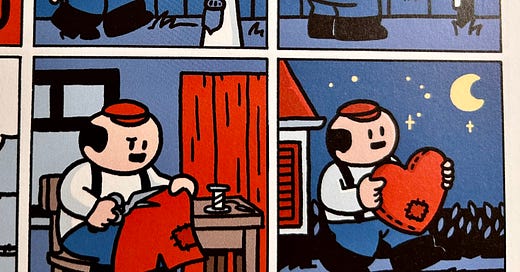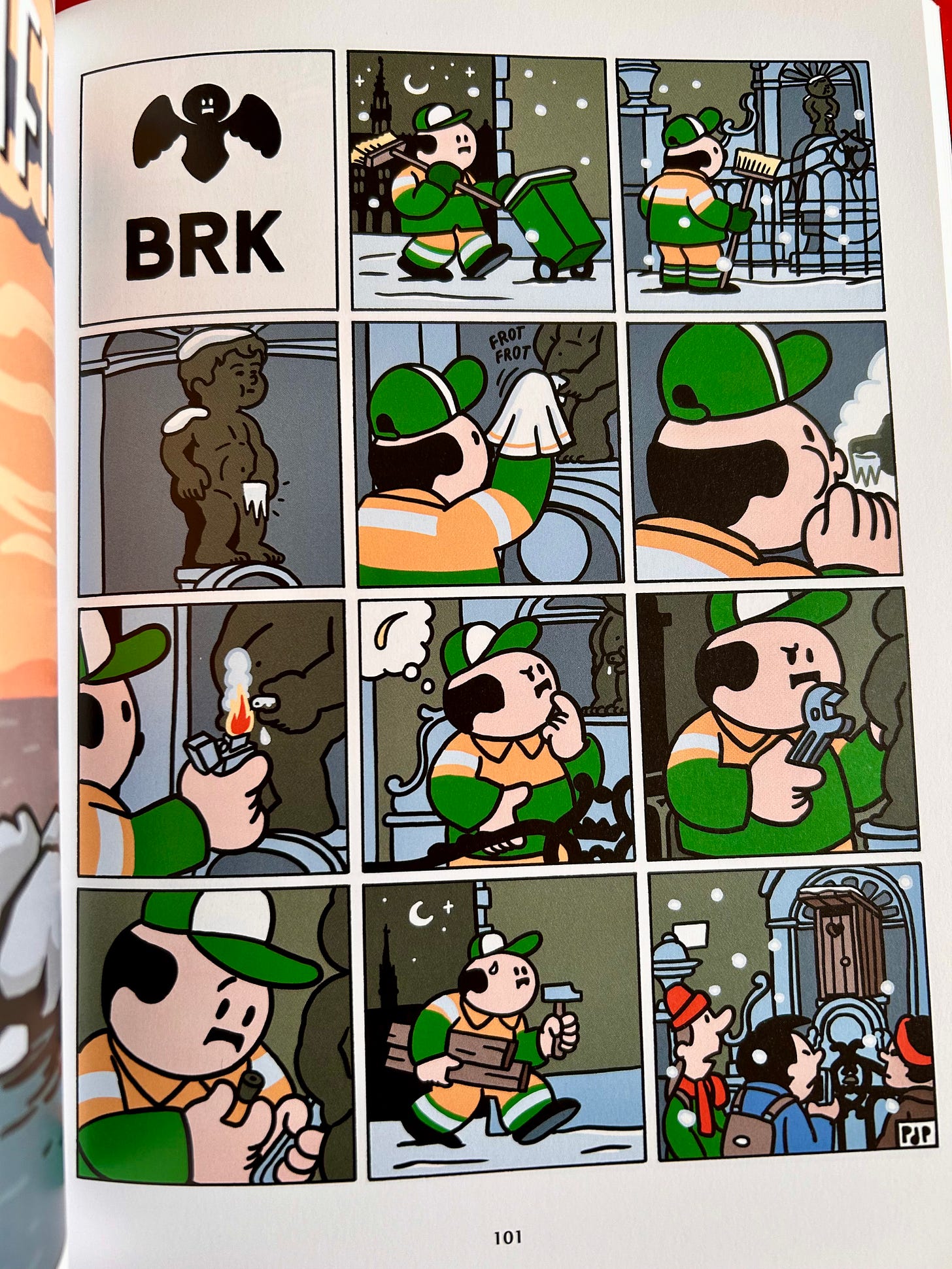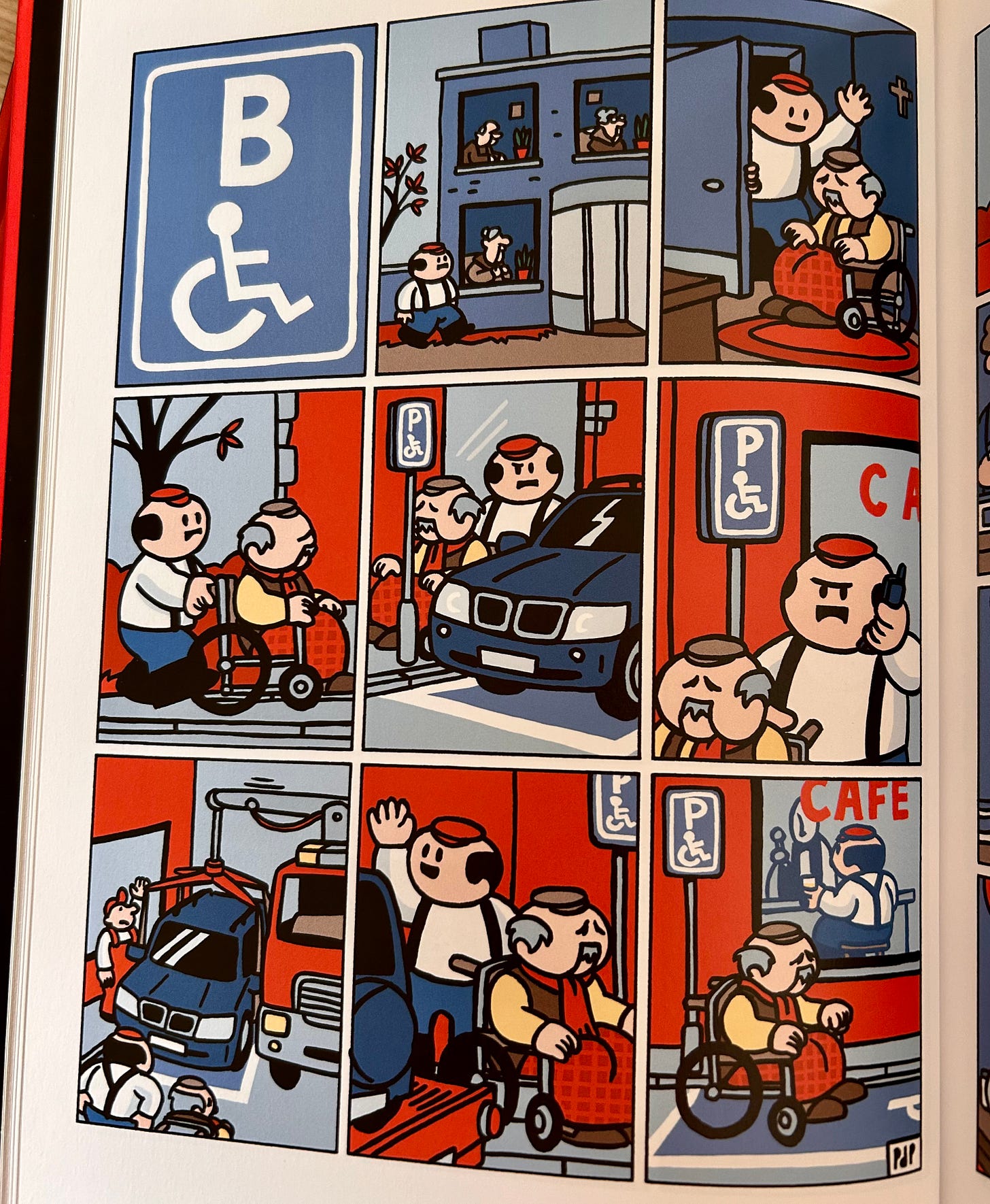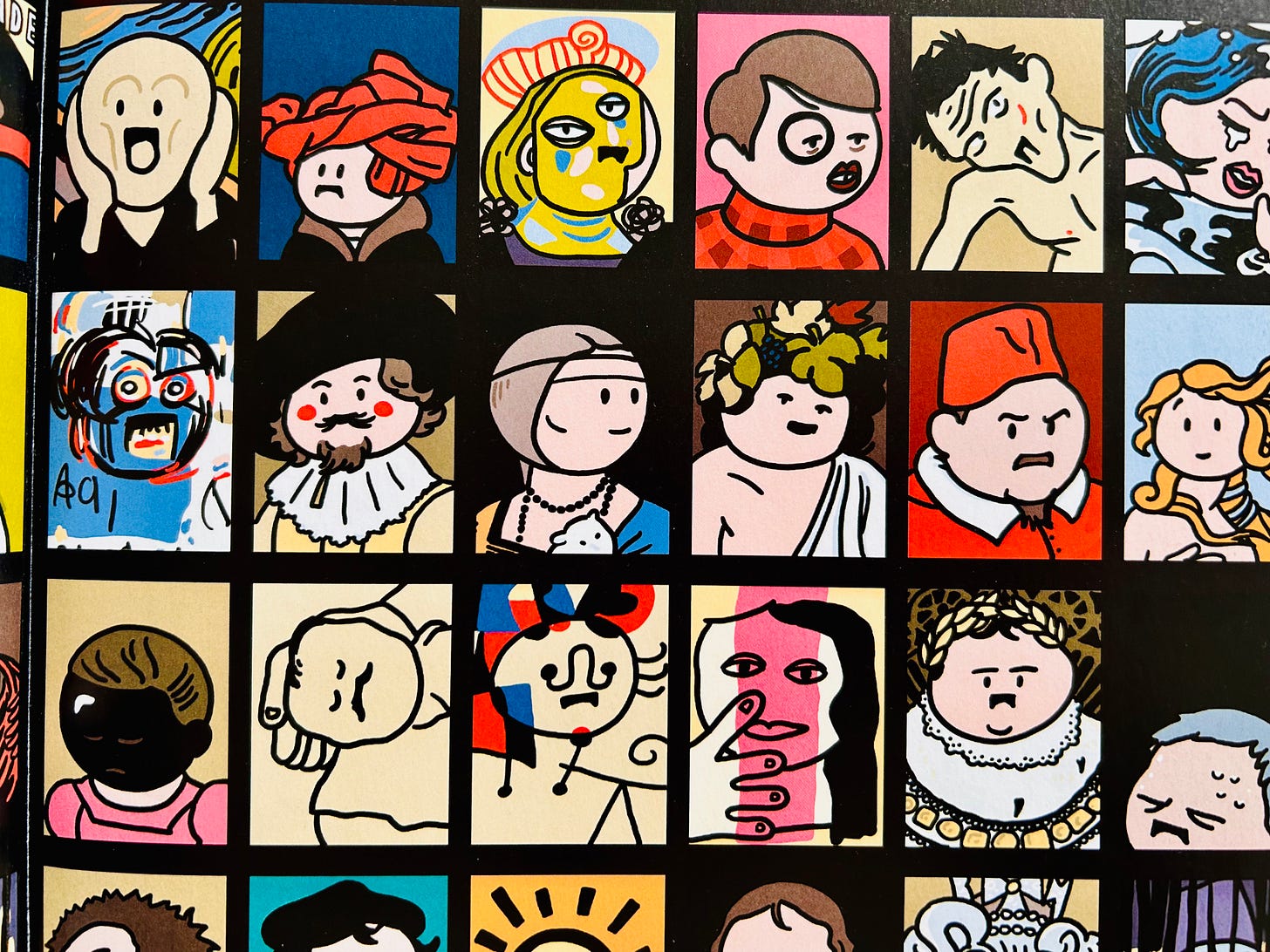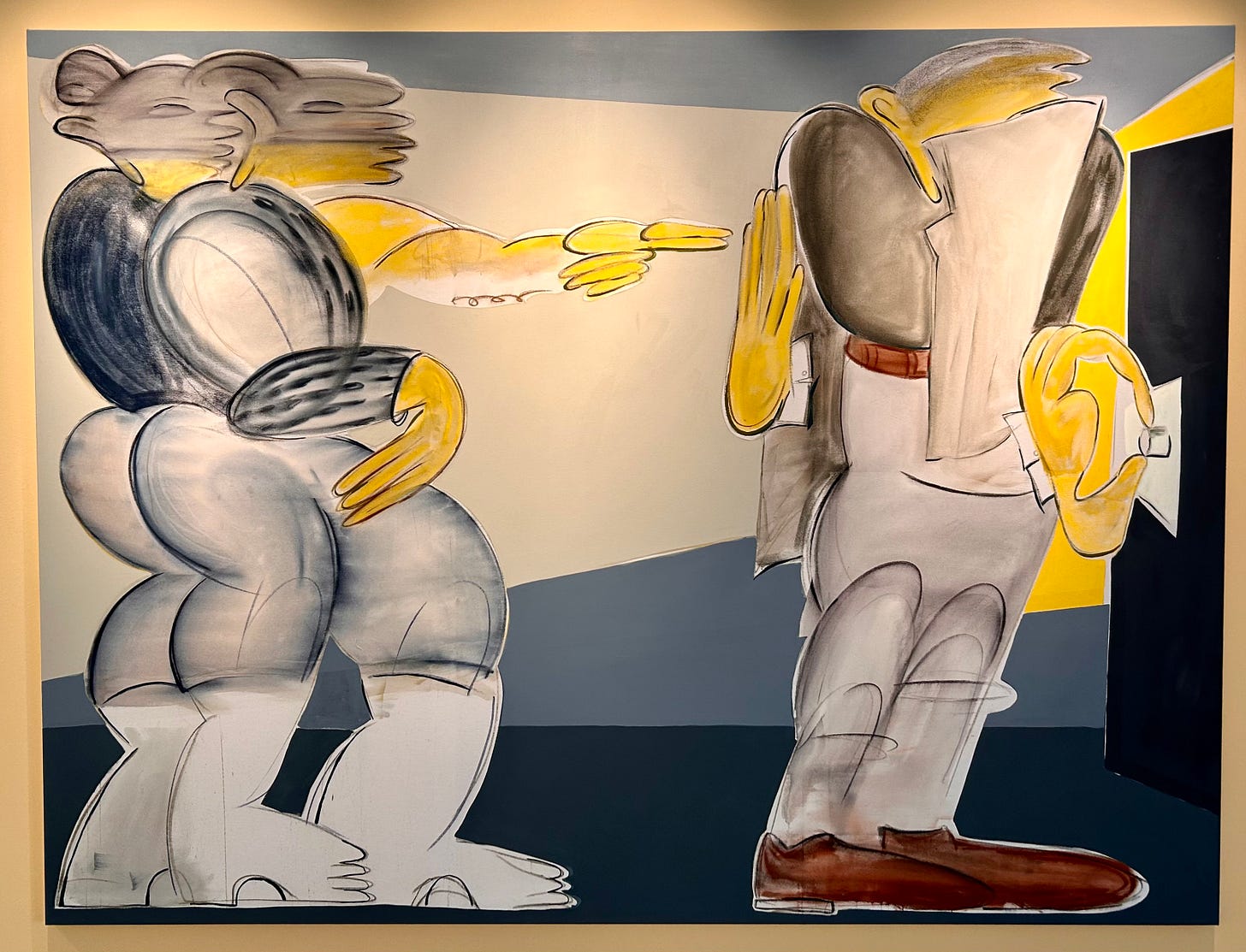Meet Boerke, the 21st century comic strip anti-hero
Like Tintin before him, Boerke is one of the staples of Belgian comics.
Estimated reading time: 4 minutes.
You’ve probably heard of Tintin, Le Chat and the Smurfs, but can you think of a contemporary comic book character?
Let me introduce you to Boerke, a 21st century anti-hero who, armed with pure intentions and a buffoon’s impenetrable confidence, gets into all sorts of trouble.
Boerke’s misadventures have been collected in a few hardback volumes while some have also been adapted into videos (watch them here).
His creator, Pieter de Poortere, is an award-winning Flemish comics artist whose creations have a designated permanent exhibit at the Comic Strip Museum in Brussels.
In 12 small images or less, Boerke will come across a situation that he is confident he can improve — only to inevitably make it worse.
If Tintin was the universal hero, a beacon of bravery and wit, Boerke is his counter-part: the universal loser.
He is that friend we all have who tries incredibly hard in life, but due to a fatal combination of pride, unearned confidence and bad luck, always ends up getting in difficult situations.
Despite the best of intentions, Boerke leaves chaos behind him wherever he goes.
But exactly because he is so clueless, you can’t blame him for the mayhem he unleashes. You can’t attempt to imbue his brain with educated reasoning, it won’t stick. All you can do is watch from the outside — and laugh.
There’s another element at play here, that creates enough space between the audience and Boerke that we can laugh at his conundrums without remorse: the chosen drawing style.
These Boerke comics are drawn in the ligne claire style, popularized through the Tintin comics by their creator, Hergé. He used clear lines without shading, without contrast or depth, to sketch some characters and a situation without weighing them down with any measure of real life.
These ligne claire comics show sketches of a person, an imaginary character inhibiting real-life situations.
Compare these to the HeMan or Marvel comics, for instance — those bodies are well defined, detailed, realistic, they evoke empathy and relatability. This realistic style forces you to see these characters as three-dimensional, as fully formed human beings with their own fears and worries and moral reasoning. The clear line style doesn’t lead its audience to similar realizations.
Because every bad thing that happens to Boerke is in large part due to his own actions, and because you feel removed enough from his reality not to empathise to the point of being overcome with emotion, his misadventures will only make you laugh.
He is stuck in a perpetual bad luck cycle, time after time, doomed never to learn from his mistakes. Like my ex.
Artist of the week
This piece by Anastasia Bay, a Paris-born artist now based in Brussels, is currently on display at the Belfius Tower last weekend.
Like all of Belgium’s biggest banks, Belfius has its own art collection — most of it by contemporary Belgian artists. Its gallery is open to the public two Saturdays per month, and tickets need to be booked in advance. (I wrote about banks and their collections in a previous issue, here).
This piece immortalizes a moment in recent French history: in 1989, five exasperated mothers who broke into 8 (eight!!) different banks in the south of France, using their loot to buy food and toys for their children. You can see someone opening the vault on the righthand side.
What’s going on?
The Bridge Theatre, a professional English-language theater organization in Brussels, is putting on a new show. ‘Frankie and Johnny in the Clair de Lune,’ by American playwright Terrence McNally, will be on June 6th through the 22nd. Tickets needed.
What’s the role of art in wartime? It’s a question I’ve been discussing with cultural sector professionals a lot these days. The House of European History has unveiled a new exhibit of European art from the Thirty Years War which, according to the website, explores “the multifaceted role of the arts in a brutal war encompassing almost the whole continent.”
The Brussels Street Photography Festival takes place throughout the city until June 2nd.
And as mentioned in last week’s issue, the Zinneke Parade is taking place this Saturday, June 1st. Readers pointed out that I incorrectly explained what “zinneke” means: it’s Brussels dialect for someone who lives in Brussels, as one reader put it. Another reader said “Zinneke is the dog around St Géry and it actually means ‘mixed breed’ and represents the diversity of Brussels!”
So, there you have it. It’s definitely not the female version of the Manneken Pis as I’d proclaimed. That is, in fact, Jeanneke Pis.
In the immortal words of American philosopher Hannah Montana, nobody’s perfect.
Enjoy your weekends,
Ana


